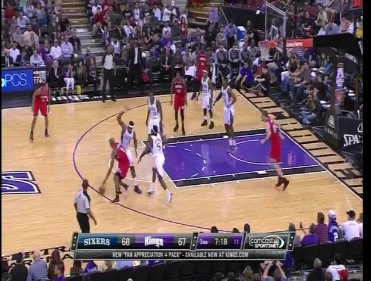The Cleveland Cavaliers underwent several dramatic changes this offseason. In an apparent attempt to make the progression from rebuilding pushover to playoff contenders, the Cavaliers greatly increased the base talent level of their roster, drafting Anthony Bennett and Sergey Karasev, and signing veterans Jarrett Jack, Earl Clark, and Andrew Bynum.
Yet, among all the offseason’s new faces, one should be familiar. Mike Brown, after coaching the Cavaliers from 2005 to 2010, was hired to replace Byron Scott earlier this offseason. Following a season and five games as coach of the Los Angeles Lakers, Brown returns to a Cavaliers team entirely different from the one he left.
Last season, the Cavaliers allowed 106.9 points per 100 possessions, the third worst defensive rating in the league, according to NBA.com. Mike Brown, considered a defensive specialist, is expected to improve this crippling performance. Under Mike Brown, the 2011-12 Lakers held opponents to 101.7 points per 100 possessions, 14th in the league. Brown’s defenses have experienced even greater success. In 2006-07 the Cleveland Cavaliers held opponents to 98.9 points per 100 possessions, fourth in the NBA, and in 2008-09 the Cavs had the second best defense in the league, allowing 99.4 points per 100 possessions.
While the compositions of Brown’s past and current Cavaliers teams are quite different, the 2010-11 Lakers and the present Cavaliers share some notable similarities. Andrew Bynum, the central piece to the Lakers’ defense, was acquired by Cleveland on a partially guaranteed deal after missing the entirety of last season dealing with various knee injuries. Though Bynum’s presence on the floor is not guaranteed, he may be able to function in a similar role this season.
Under Brown, Bynum took full advantage of his massive frame on defense, dropping towards the paint on pick and rolls, closing driving lanes on help defense, and remaining in position to affect shots at the rim.
Mike Brown’s defensive system did an excellent job ensuring that Bynum was always close to the basket and in position to affect and prevent shots at the rim. Though this may seem to be a basic concept, many coaches do not consistently put their players in the best position for success.
DeMarcus Cousins, despite being a relatively mobile big man, should not be forced to hedge several feet out on Damien Wilkins, the ball handler, and recover all the way to Spencer Hawes in the short corner. Cousins does not always hedge this hard (and under new coach Mike Malone it is likely that he almost never will), but to deny the middle, a basic tenant of most offenses, has to stick on the ball handler for several feet. This makes Cousins’ recovery to Hawes much more difficult while leaving the Sacramento interior defenseless if Wilkins is able to turn the corner.
Contrast this with Bynum defending a pick and roll from a similar location. Rather than hedging on Tony Parker, Bynum drops several feet off his man into the paint, allowing him to prevent a shot at the rim by either Parker or the screen-setter, Tim Duncan.
The Cavaliers, like Brown’s Lakers, feature a high usage perimeter scorer and formidable frontcourt. As it was with Kobe Bryant before him, the interaction between Kyrie Irving and his frontcourt will be key to the Lakers’ success.
This video, grabbed by Conrad Kaczmarek for an excellent breakdown of Andrew Bynum’s ability to score off cuts and off-ball positioning, displays one of Brown’s primary tactics for reconciling Bryant and Bynum in the offense.
Bynum and Bryant are the only offensive players on the strong side. If Bryant drives left, Marcin Gortat, Bynum’s defender, is the only defender in position to help. If Gortat leaves Bynum, Channing Fry, would likely attempt to help. However, a defender entering the play off balance has little chance to prevent Bynum from finishing in such deep position.
If Bryant drives left, either Frye must leave Gasol, allowing an open jump shot and driving lane, or Gortat must help off Bynum. As Kaczmarek shows, Bynum is excellent at finding the ideal position to receive and finish a pass in these situations. Expect Mike Brown to apply a similar offensive strategy to the Cavaliers.
Brown has always been known for his attention to detail defensively. His stint with the Lakers may provide a few offensive wrinkles to bring to Cleveland.
As Bryant rotates through what finishes as a pin down, he sets a screen for Bynum in the post, both giving Bynum an opportunity to establish post position on the strong-side and giving Bryant separation as he releases from the screen. These intricacies, often missing from the Cavaliers offense last season, provide players with slight edges in the battle for efficient opportunities.
As with any team, there are many variables affecting the Cavaliers upcoming season. If Mike Brown is able to put the talented roster in a position to succeed, the Cavaliers should be an imposing lower-tier playoff team.



